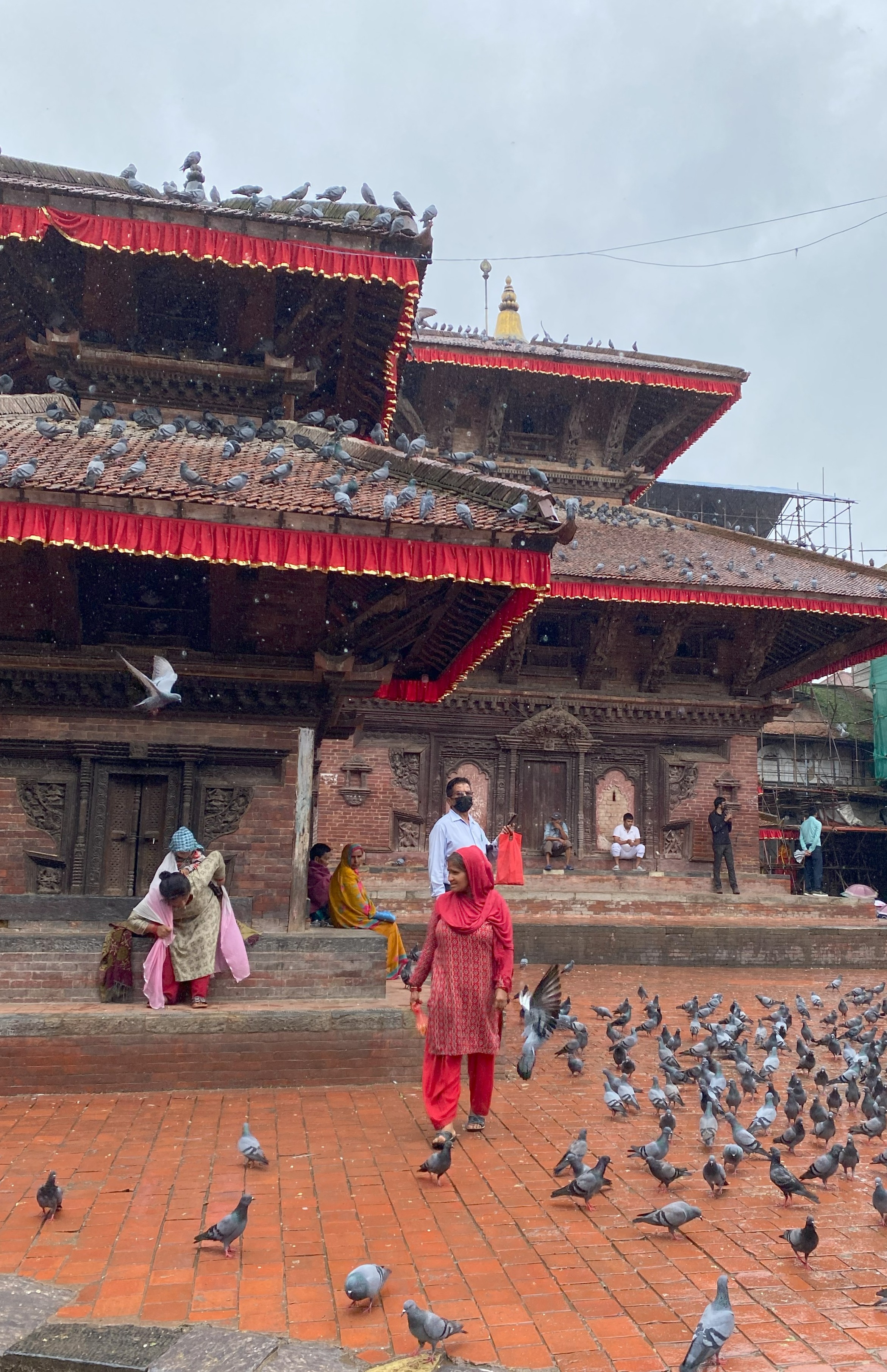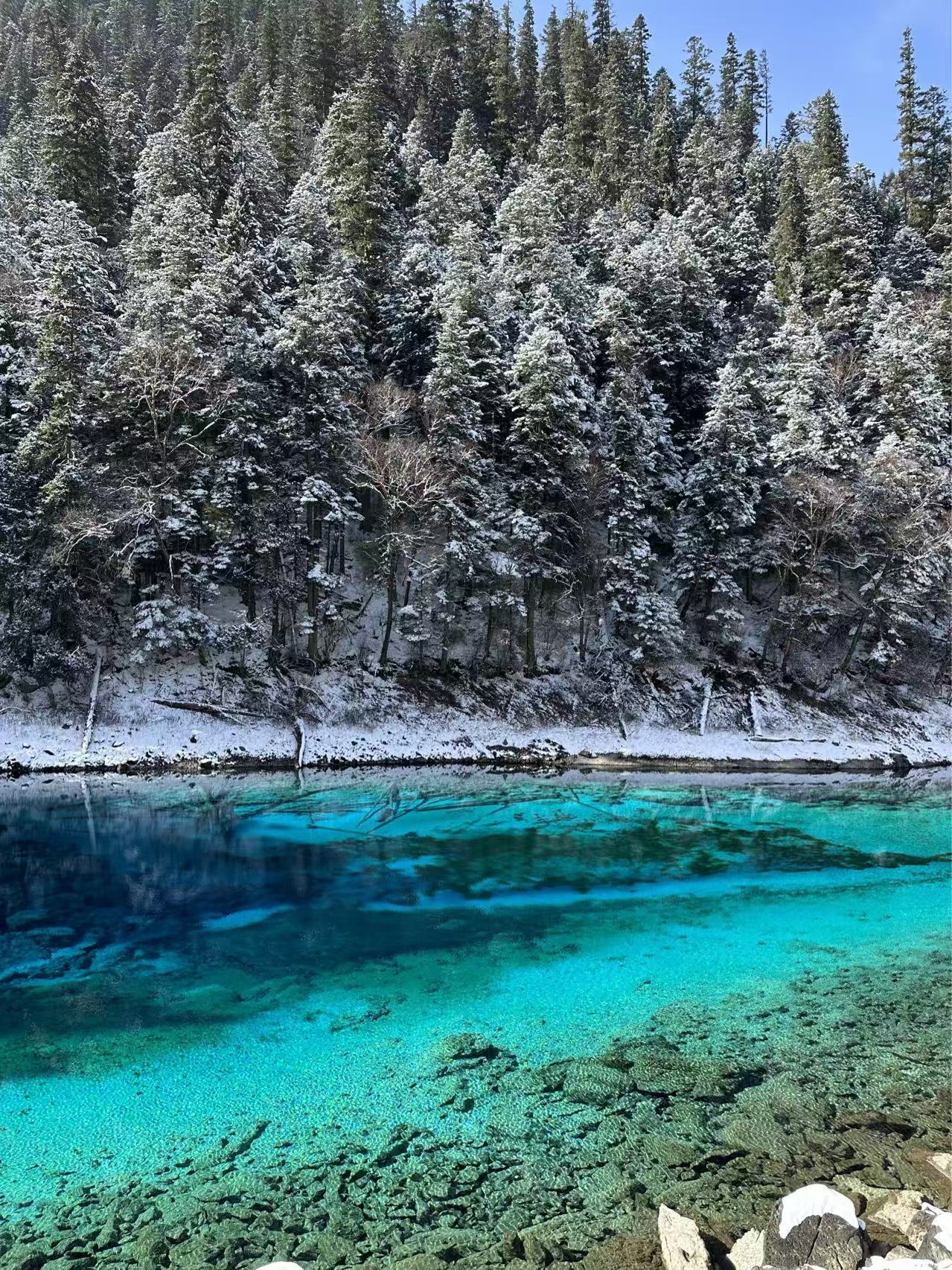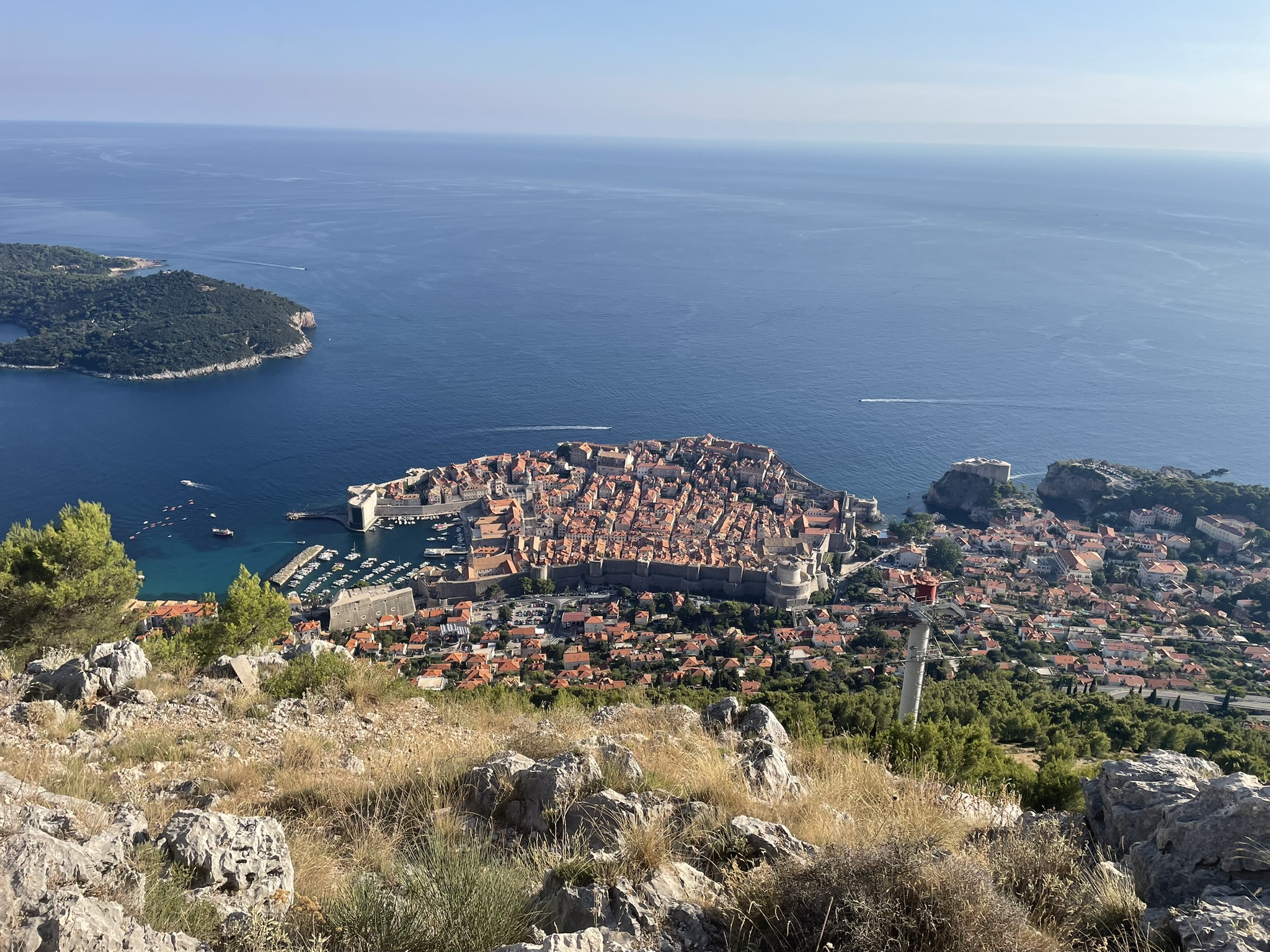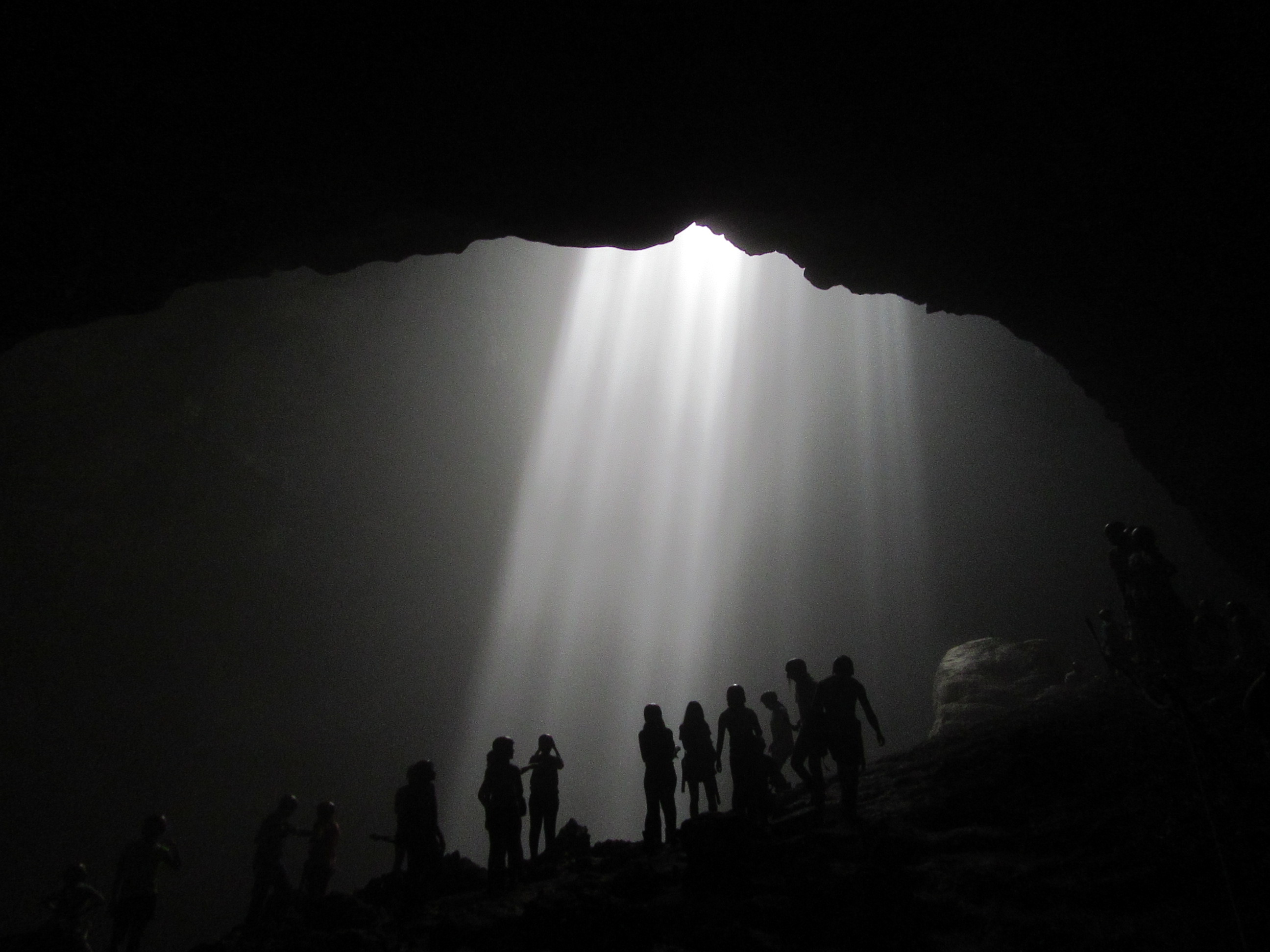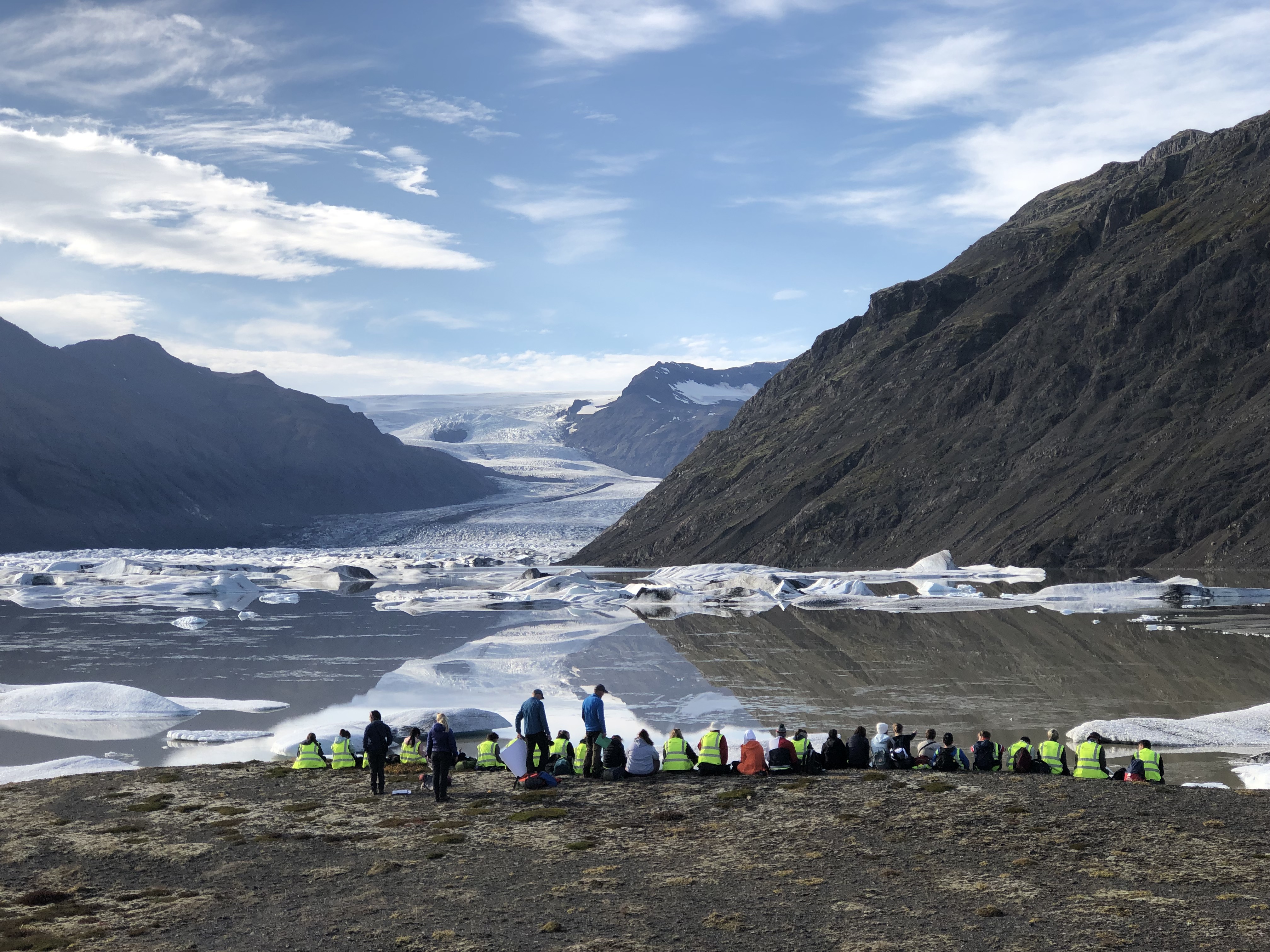Durham Geography Photography Competition
Welcome! Here are the entries for the 2025 Durham Geography undergraduate photography competition.
#1. Harry Small.
Description: This photograph shows the Jungfrau and the Eiger mountains in the Swiss Alps in February. Since I have been visiting this region over the last 15 years the snow cover in the region has declined and not only this, but the small mountain glaciers scattered throughout the area have become visibly smaller. This is therefore a real representation of climate change in a very short period. This area is also heavily reliant on the snow sports industry and without this, the livelihoods of people in the area will also be put in jeopardy.
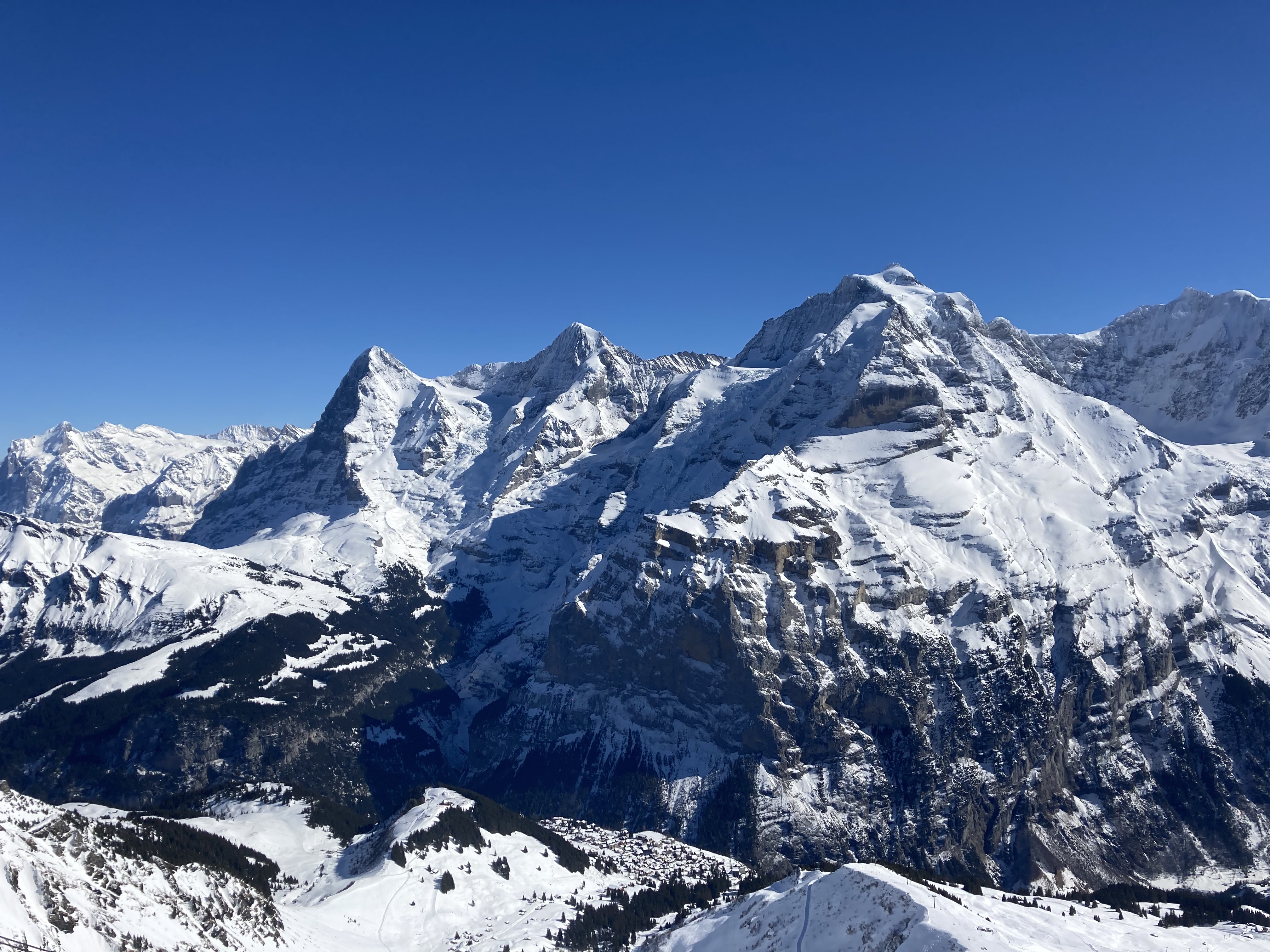
#2. Bella Jarvis
Description: This image captures a highland cow resting amid the hummocky terrain of Glenn Torra Mhichaig, Isle of Skye. The glacially sculpted landscape of undulating ground and exposed sediment lithofacies shed light onto the glacial history of the area and associated processes. These moraines are central to numerous Skye based geomorphological projects, which investigate Quaternary glaciation patterns, climate reconstructions and sediment transport processes.
Location: Glenn Torra Mhichaig, Isle of Skye
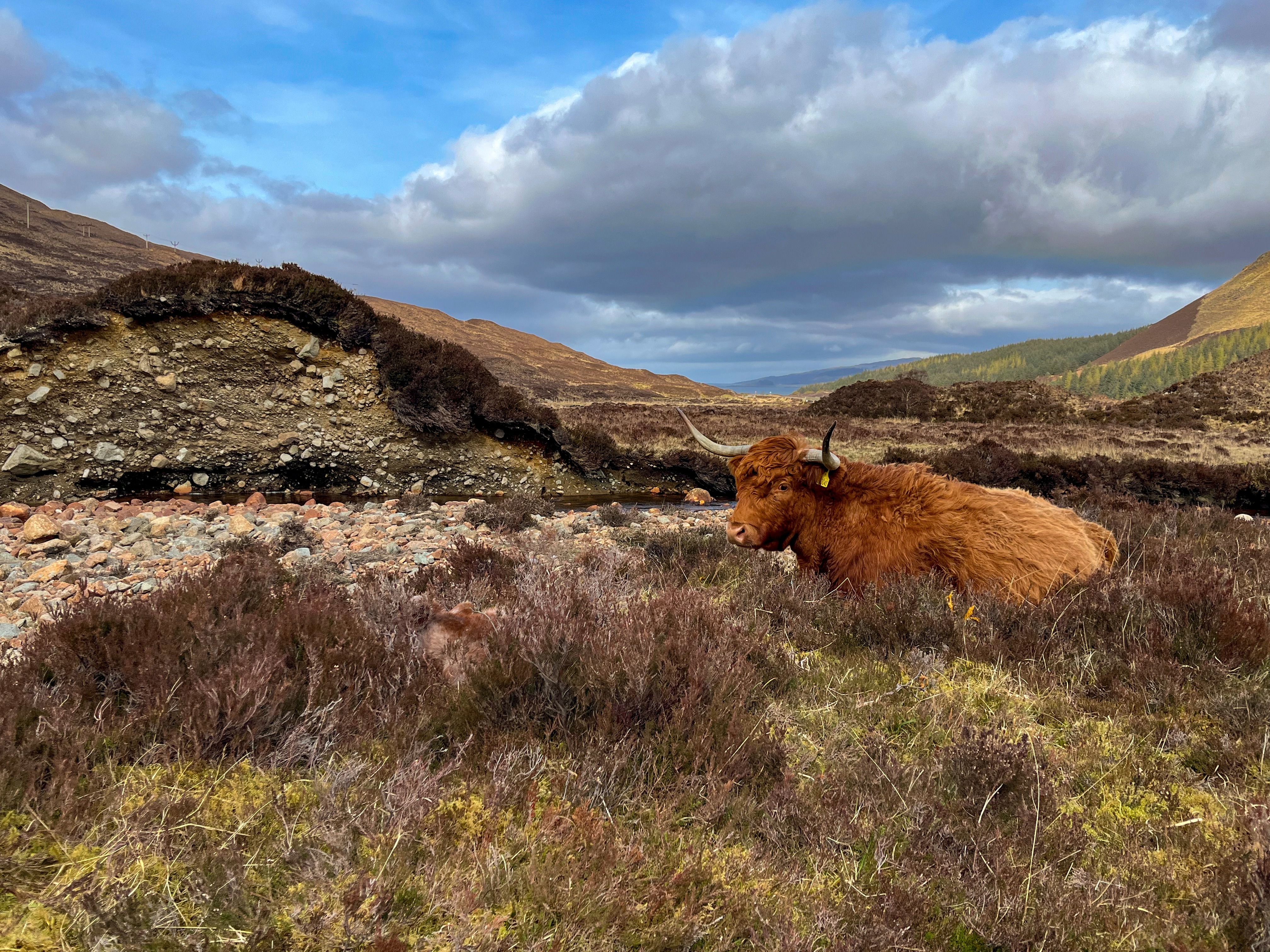
#3. Amy Baxter
Description: Captured from a 160 m high bridge over a cliff top gorge above the Bhote Koshi River (Nepal), this image frames terraced hillslopes, dense vegetation, and a vivid sunset near the Nepal-Tibet border. It contrasts the gorge's rugged landscape - shaped by powerful erosional processes - with the tranquil stillness of the sunset reflecting on the river and surrounding mountains. Geographically, this area is important for hydropower production, particularly during the monsoon season, when increased river discharge is harnessed at multiple generation sites both upstream and downstream of this point.
Location: Bhote Koshi River (Nepal)
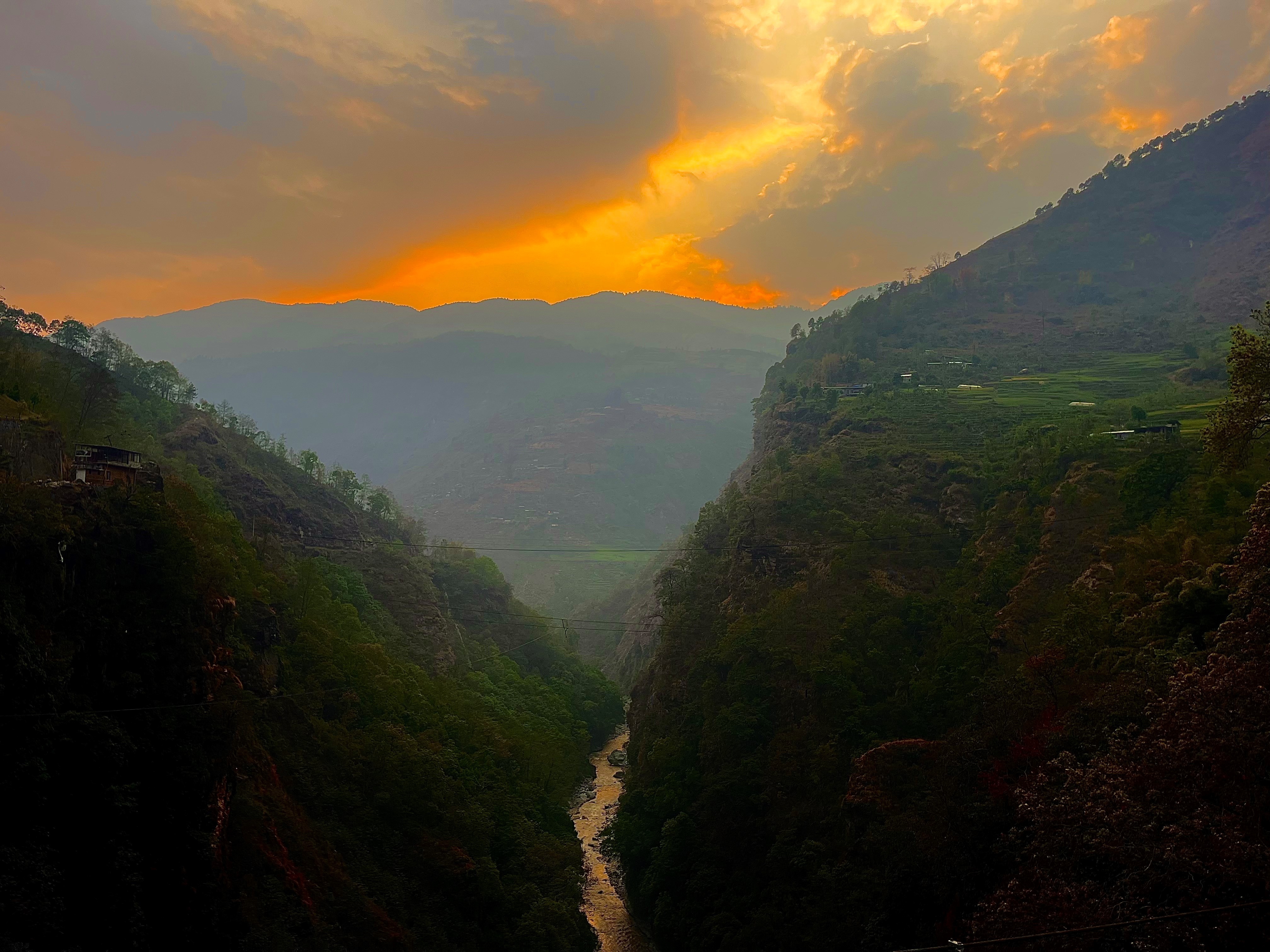
#4. Katie Garratt
Description: Snapped on June 4th, 2024, during a month-long overland journey from Hong Kong back to the UK, this cheeky moment features a wild macaque in Zhangjiajie, China. Living alongside tourists, these monkeys are bold and opportunistic- this one proudly munches on a banana swiped from an unsuspecting visitor. In the background towers the surreal Zhangjiajie National Forest Park, home to sandstone pillars formed millions of years ago when the region lay beneath an ancient sea. Tectonic shifts lifted the land skyward, sculpting today's dramatic landscape.
Location: Zhangjiajie, China.
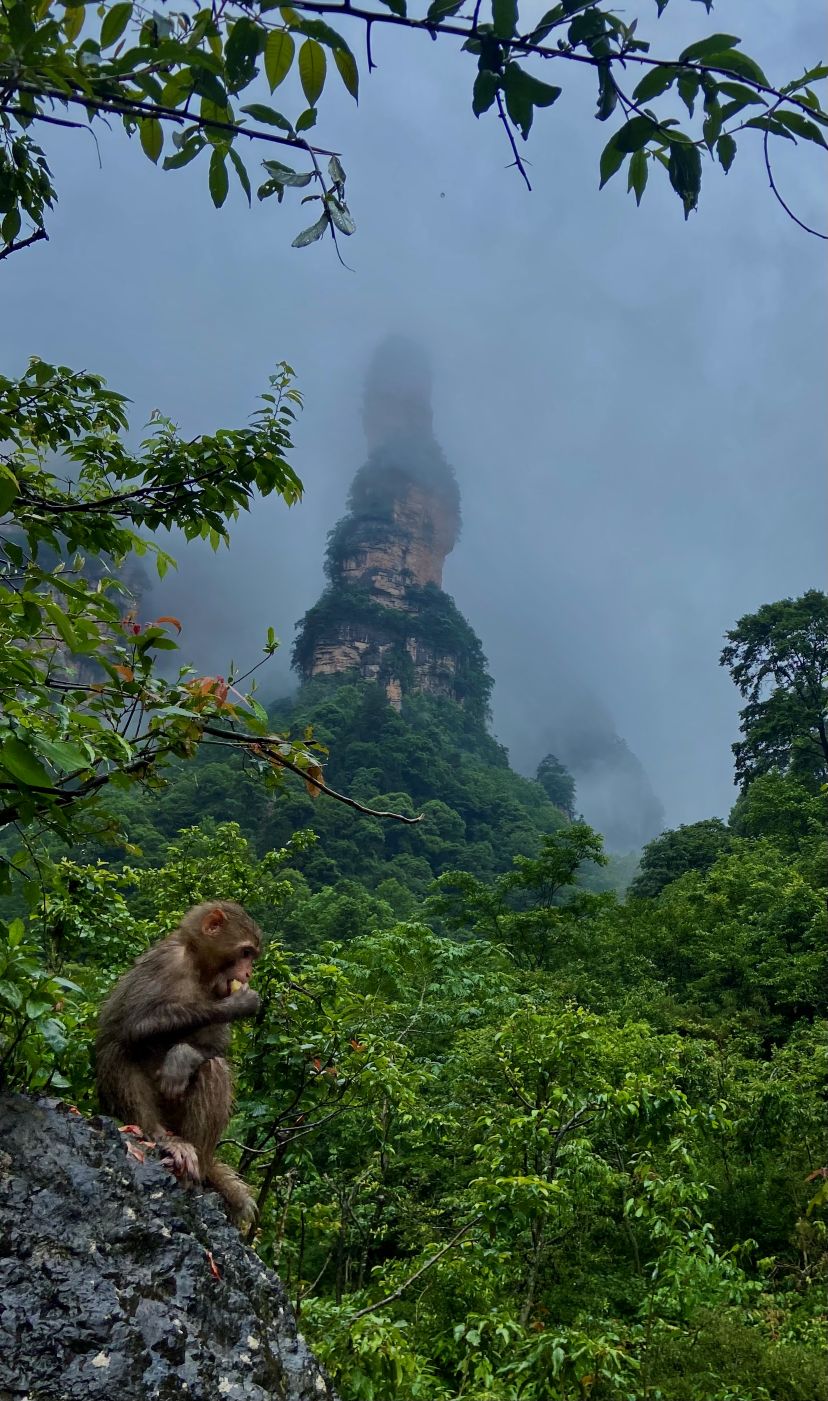
#5. Ophelia Vesely
Description: A disused building on top of Cap de Formentor frames the Mallorcan coast. This was a hotspot for graffiti, provoking me to reflect on why people find immortalising themselves via art particularly desirable in places as impressive yet inaccessible as this. The contrast between the dilapidated architecture and the surrounding mountains which have endured millennia of geophysical processes is a stark reminder of the fallibility of human construction.
Location: Mallorca, Spain
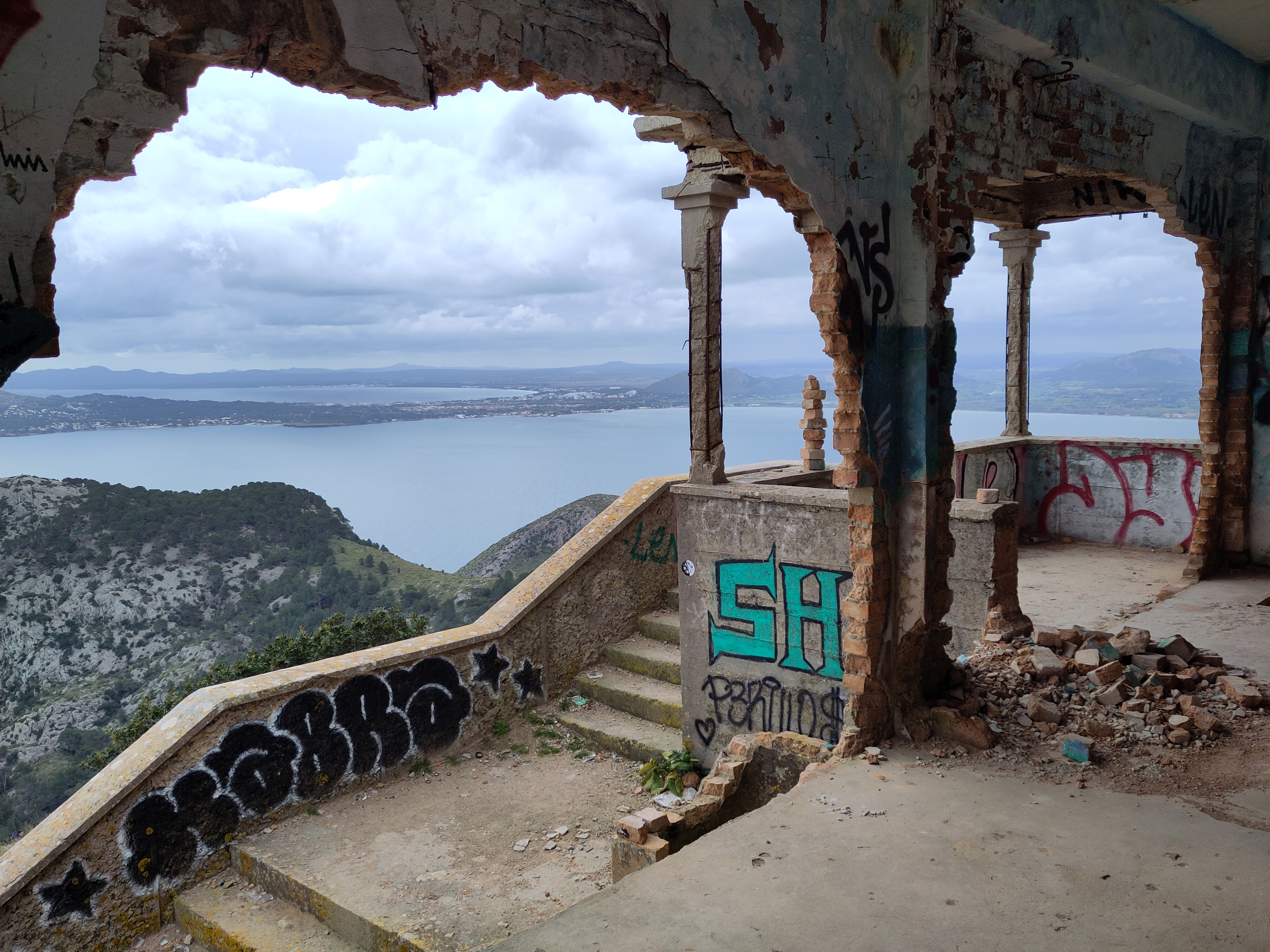
#6. Luke Temple
Description: Historically home to jazz greats like Louis Armstrong and iconic venues such as the Sunset Café, Chicago has a vibrant musical heritage. However, amidst gentrification its cultural economy is being displaced, drawn toward the bustling downtown area captured here in golden twilight glow.
Location: Chicago, USA
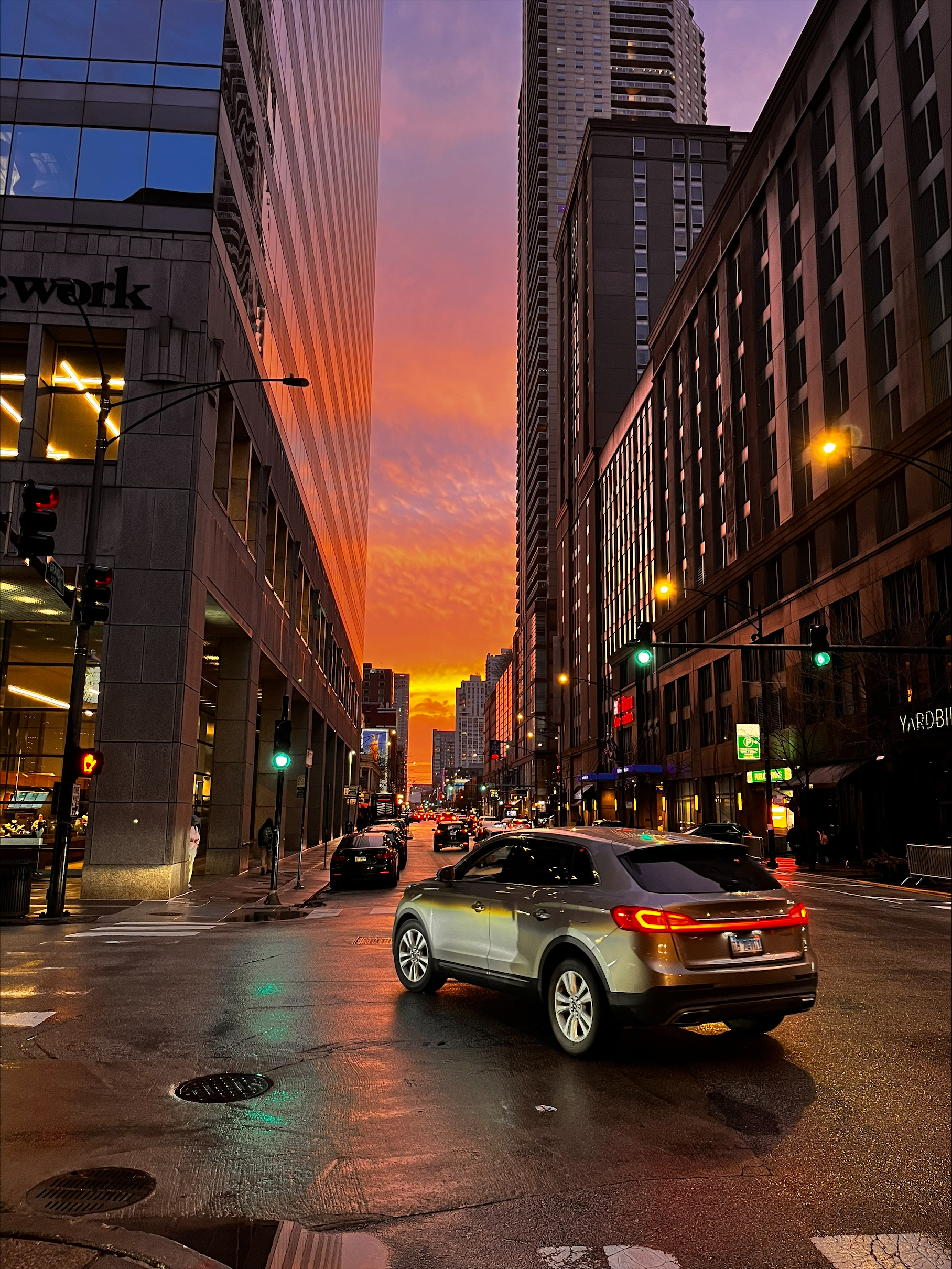
#7. Georgie Eve
Description: Captured in the Atacama dunes surrounding Huacachina, this image reflects a compelling interplay between people and place. Once an untouched landscape, the desert has been transformed into a hub for sports; who needs mountains when you have dunes? The surreal scene of people carrying skis across the sand feels both futuristic and otherworldly, a vivid example of how cultural perceptions and economic motivations reimagine space. This highlights how global flows of people and capital shape even remote corners of the Earth, transforming deserts into sites of tourism. It also begs the question; With the growing climate crisis, could this be our future?
Location: Huacachina, Peru.
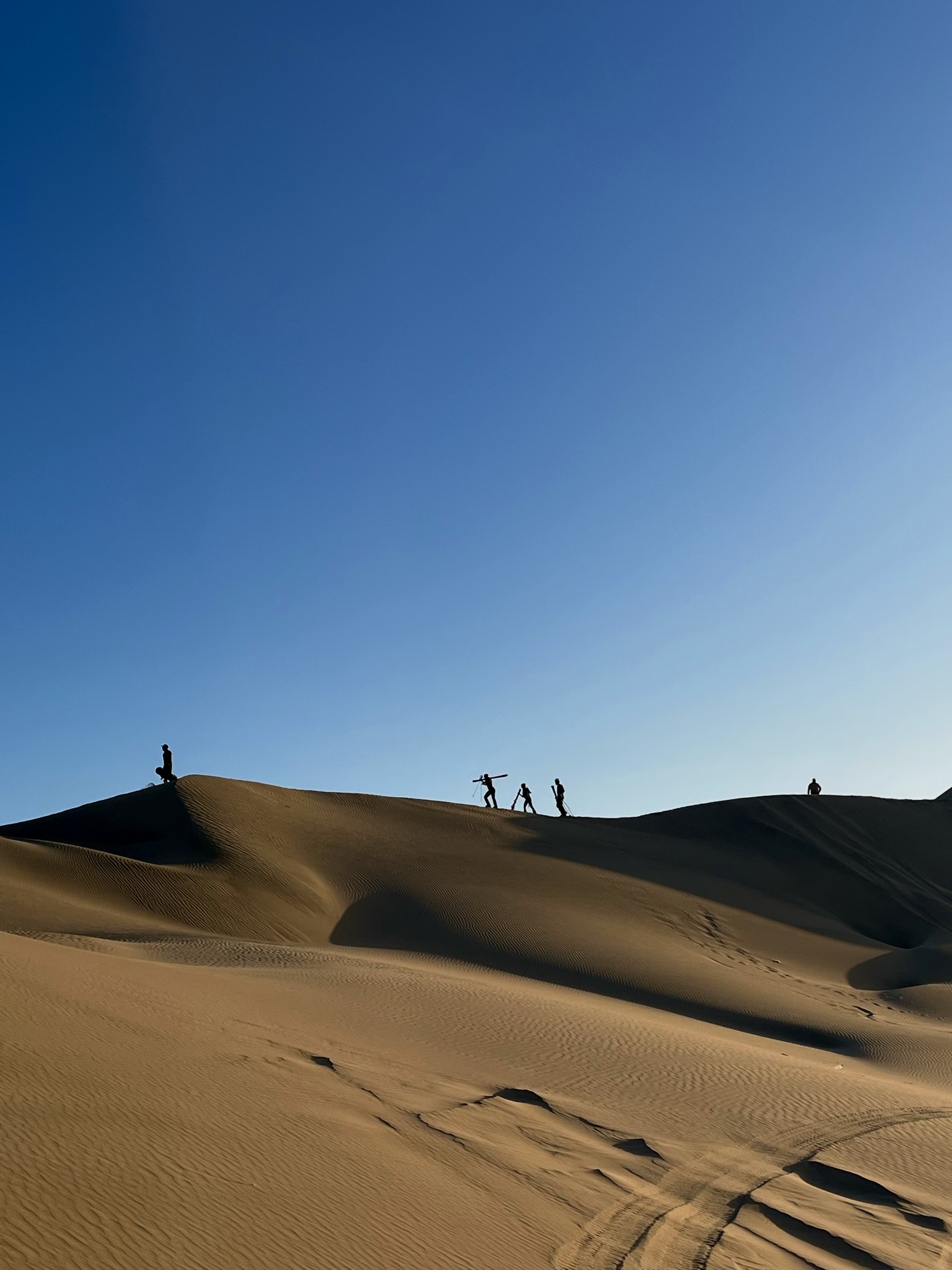
#8. Gabriella Livingston
Description: The photo reflects how people assign personal and cultural meaning to spaces in the city, a concept central to human geography. Doreen Massey’s ideas about the "power of place" emphasise how individuals shape and transform their environments. Taking wedding photos in front of The Bean in Chicago, not only mirrors the couple’s moment but also symbolises how public spaces, through human interaction, become redefined and infused with new layers of meaning and identity. They seem to share this moment with the whole city too as in the photo you can see the skyscrapers and people watching.
Location: Chicago, USA

#9. Toby Dossett
Description: This photograph captures a crocodile emerging from the murky waters of the Río Grande de Tárcoles, Costa Rica, drawn by the presence of food waste discarded by residents, attracting attention of tourists. It illustrates the complex interplay between human geography—tourism economies, cultural practices, and livelihoods—and physical geography, including riverine ecosystems and predator behaviour. The image invites reflection on how human intervention reshapes natural processes, offering insight into the ecological and socio-economic consequences of wildlife commodification. By focusing on this human-wildlife dynamic, the photo speaks to broader themes of sustainability, environmental ethics, and geographic change driven by global and local forces.
Location: Río Grande de Tárcoles, Costa Rica
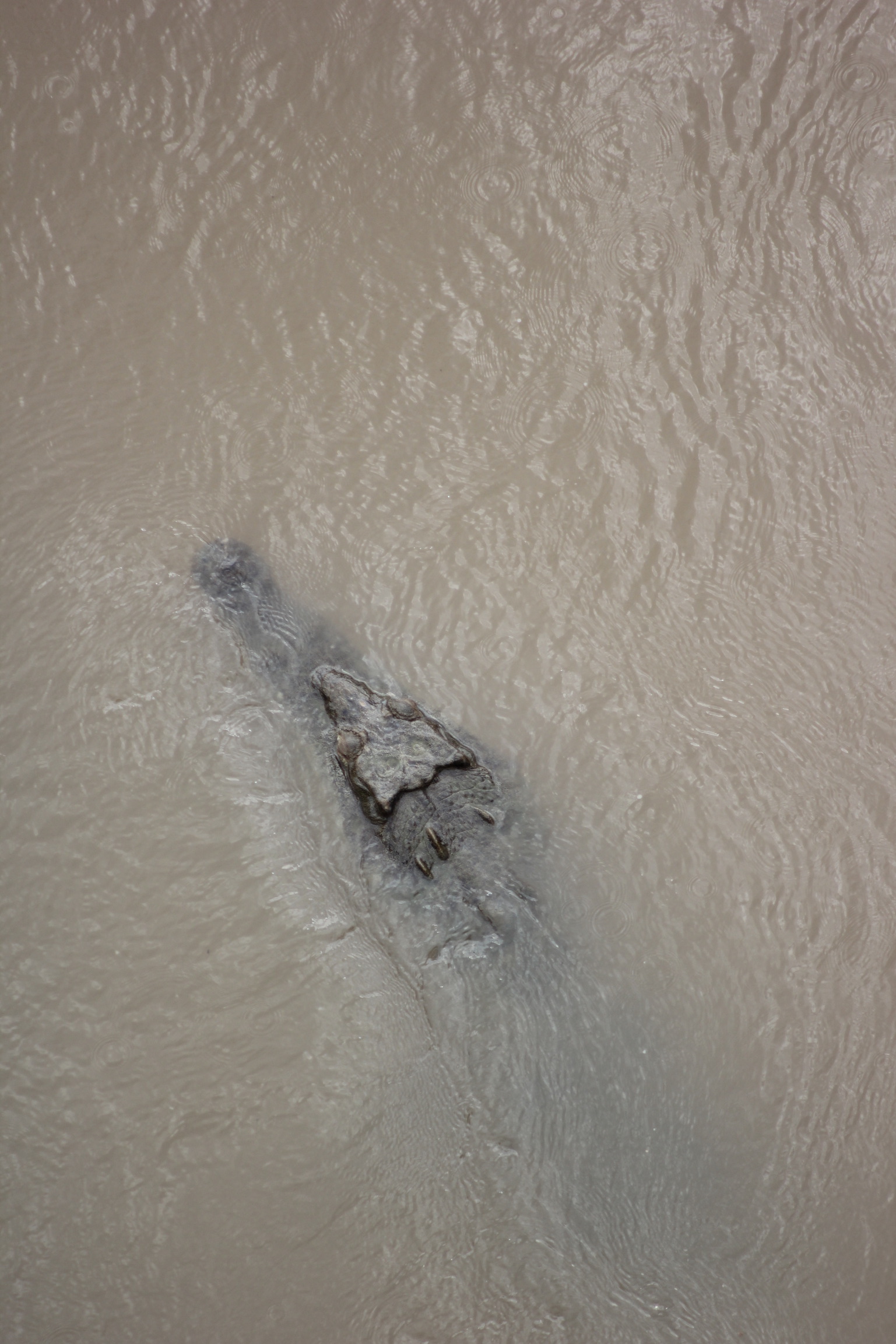
#10. Reece Butler
Description: The photo shows Oeschinensee in the Bernese Alps in Switzerland. This depicts a classic Alpine landscape formed by glaciation. The lake is characterised by its distinctive blue colour, with this coming from fine-grained sediments suspended in glacial meltwater that drains into the lake.
Location: Switzerland.
.jpg)
#11. Megan Powell
Description: Attached is a photo I took when I was helping my grandpa to turn out ewes and lambs over the Easter break. I think the photo can be of interest to human geographers because of the way it captures rural landscape and its association with generational farming. The landscape captured is vast and shows the beauty of Wales and the countryside. It shows nature, yet human influence is evident as you can see how the land has been divided by fences and hedges that act as borders. You can also see a plane in the sky.
Location: Wales
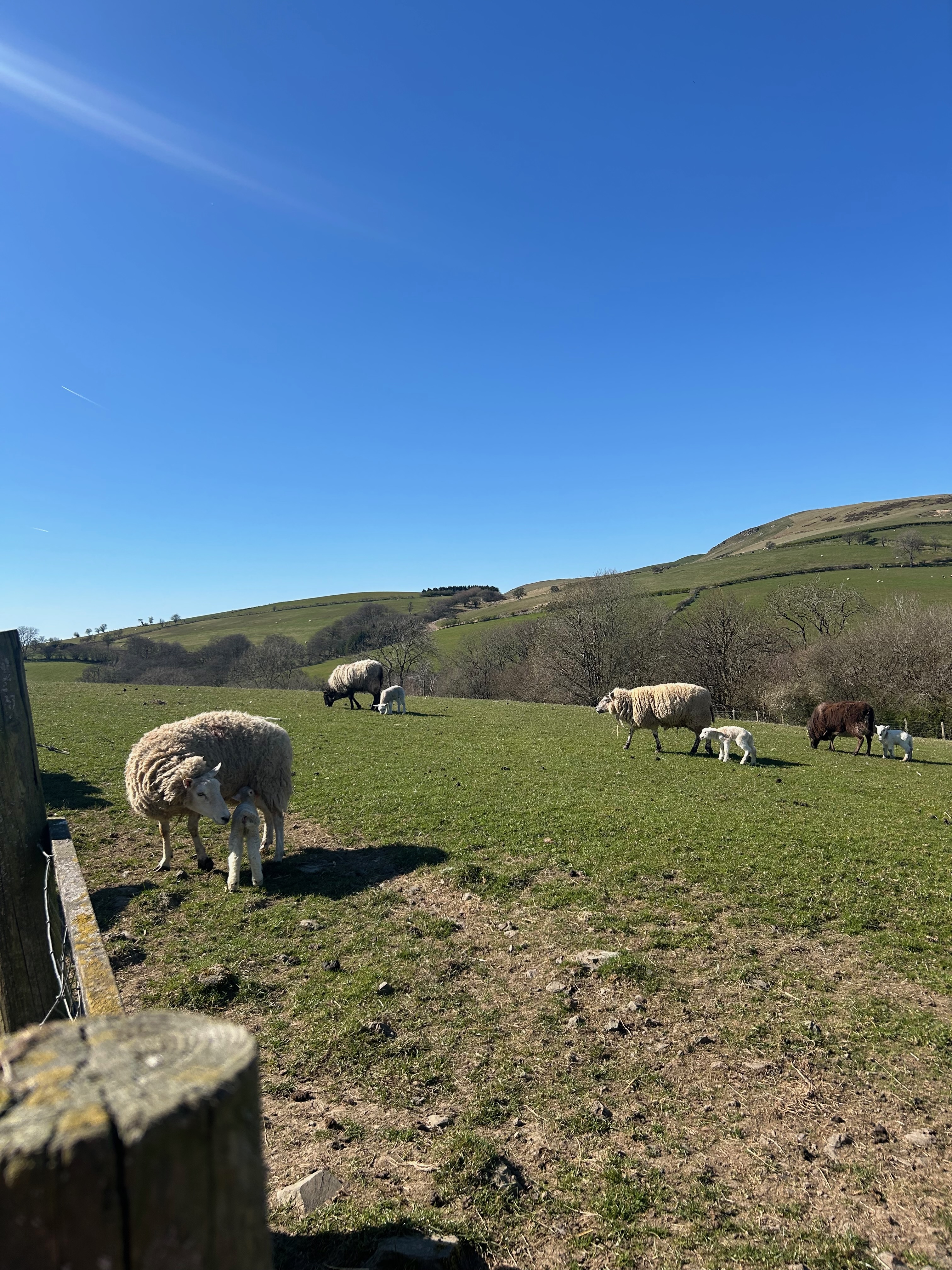
#12. Juliet Harley
Description: The image depicts Semuc Campey in Guatemala, a natural 300 m limestone bridge, under which passes the Cahabón River. In the image you can see the interaction of humans with this environment with people swimming in the natural pools.
Location: Semuc Campey in Guatemala.
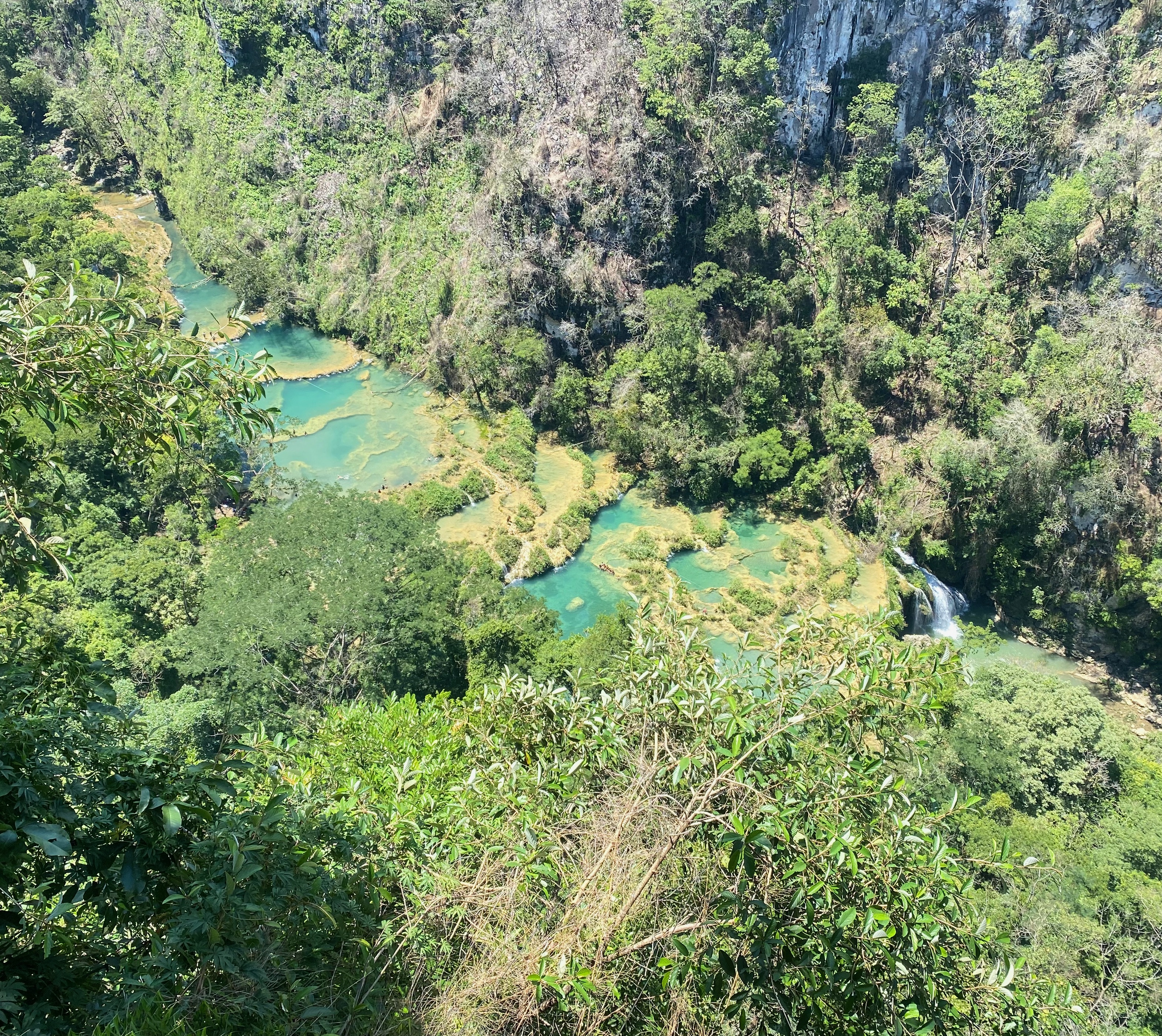
#13. Charlie Tweedy
Description: This image captures the Dôme du Goûter standing, at over 4000m, shoulder to shoulder with Mont Blanc in the French Alps overlooking the Bossons Glacier as it flows into the Chamonix Valley. Once immense, this glacier has dramatically retreated over the past 50 years, a stark indicator of anthropogenic climate change. My photo highlights the inherent beauty of alpine landscapes and exemplifies the subtle yet catastrophic influence of human action on these endemic landscapes. It underscores the urgent need for research into an area where climate, culture and consequences converge situated at the intersection of human and physical geographies.
Location: Chamonix Valley, France
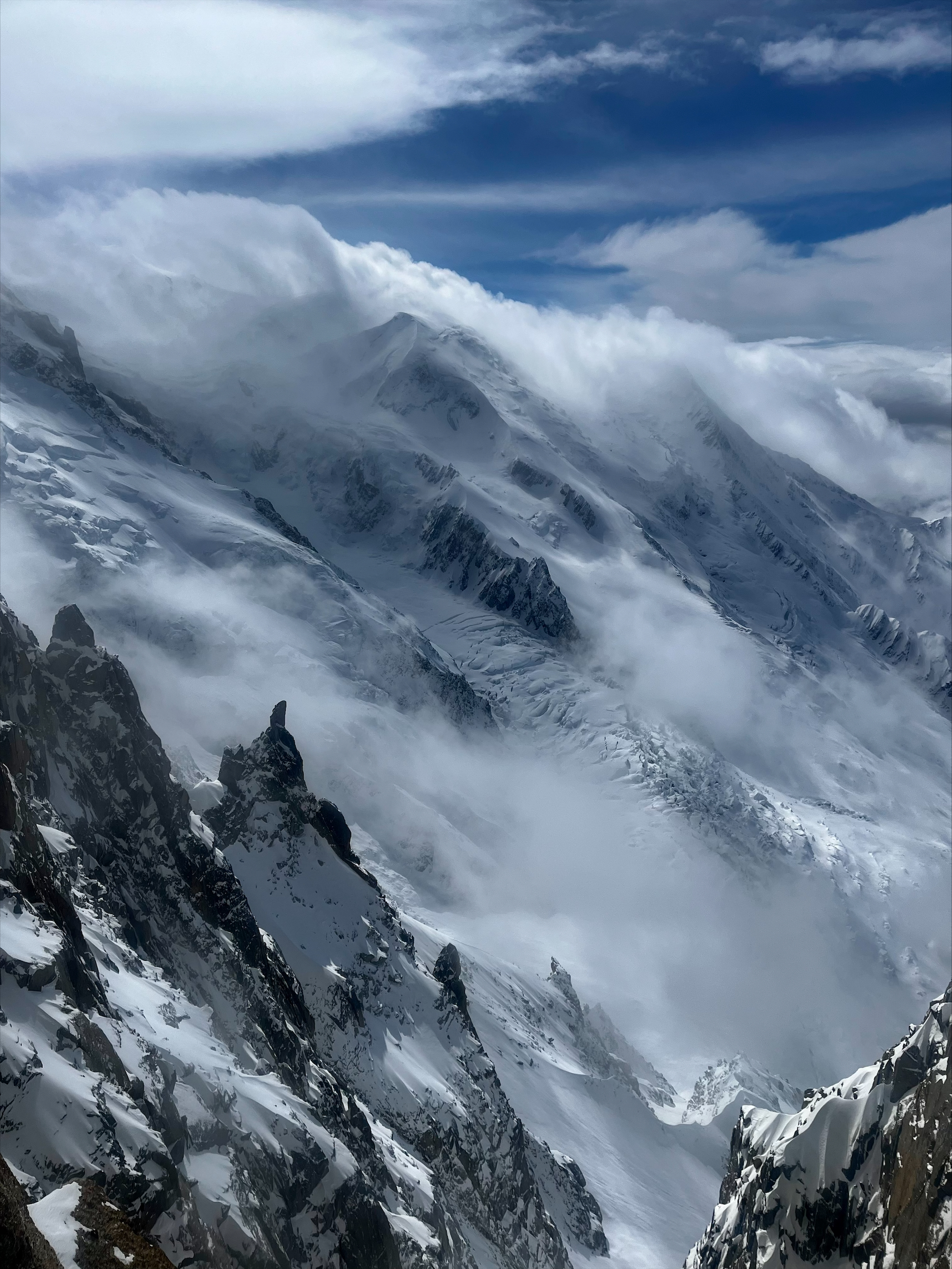
#14. Shivona Chellakootty
Title: Canal Co-habitants
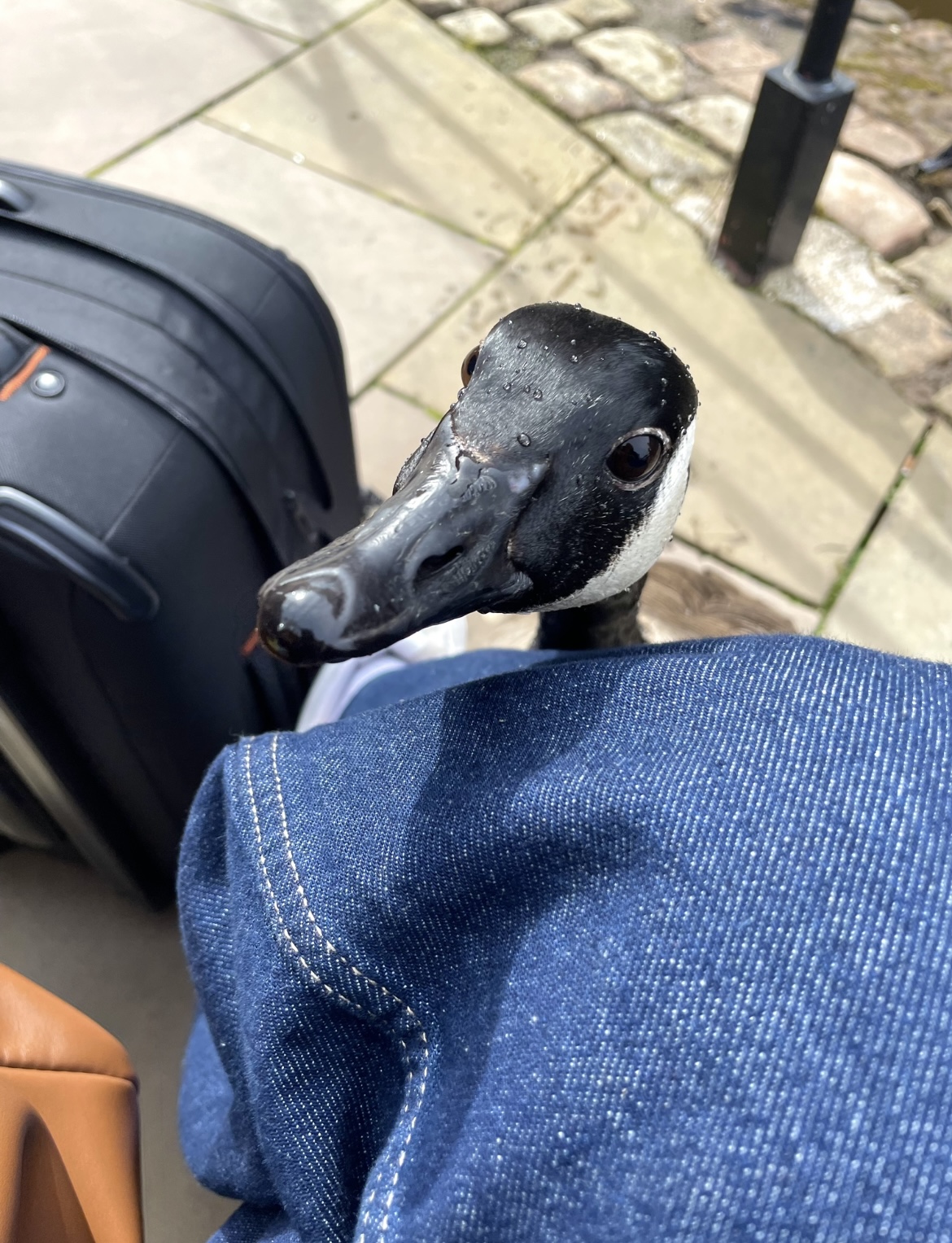
#15. Finn Knight
Description: I took this photo at around eight in the morning, walking to the train station on a foggy, cold day in February. It depicts six individuals campaigning against fossil fuels and oil usage in Loughborough. It is a very mild-mannered, passive form of activism, absolutely nothing on the scale of Just Stop Oil, however, the passion ordinary, elderly people have to stand by the side of the road, in a town in the Midlands, is quite moving. I think it captures a rare, unseen reality of local climate action.
Location: Loughborough, England.

#16. Ruyi Quan
Description: In the quiet alleys of Mallorca, the grey walls of the old town remain unchanged, while new forms of soft tourism—like bicycle rentals—gently embed themselves into the urban fabric. This image captures the coexistence of historical architecture and contemporary travel practices, where visitors pass through spaces still shaped by everyday local life. Rather than erasing identity, tourism here becomes a subtle layer over enduring place.
Location: Mallorca, Spain.
.jpg)
#17. Maddy Grimmond
Description: The Angel glacier on north face of Mount Edith Cavell in Jasper National Park, Canada, captured while hiking through the Cavell Medows. The glacier was originally named for the formation of the glacial ice up the cirque edges which resembled angel wings. However, these "wings" have since melted, flowing down the mountain face to form the striking turquoise ice-topped lake below. This image highlights the impact global warming is having on the environment. The water from the meltwater lake then flows on to meet the Astoria River.
Location: Jasper national park, Canada
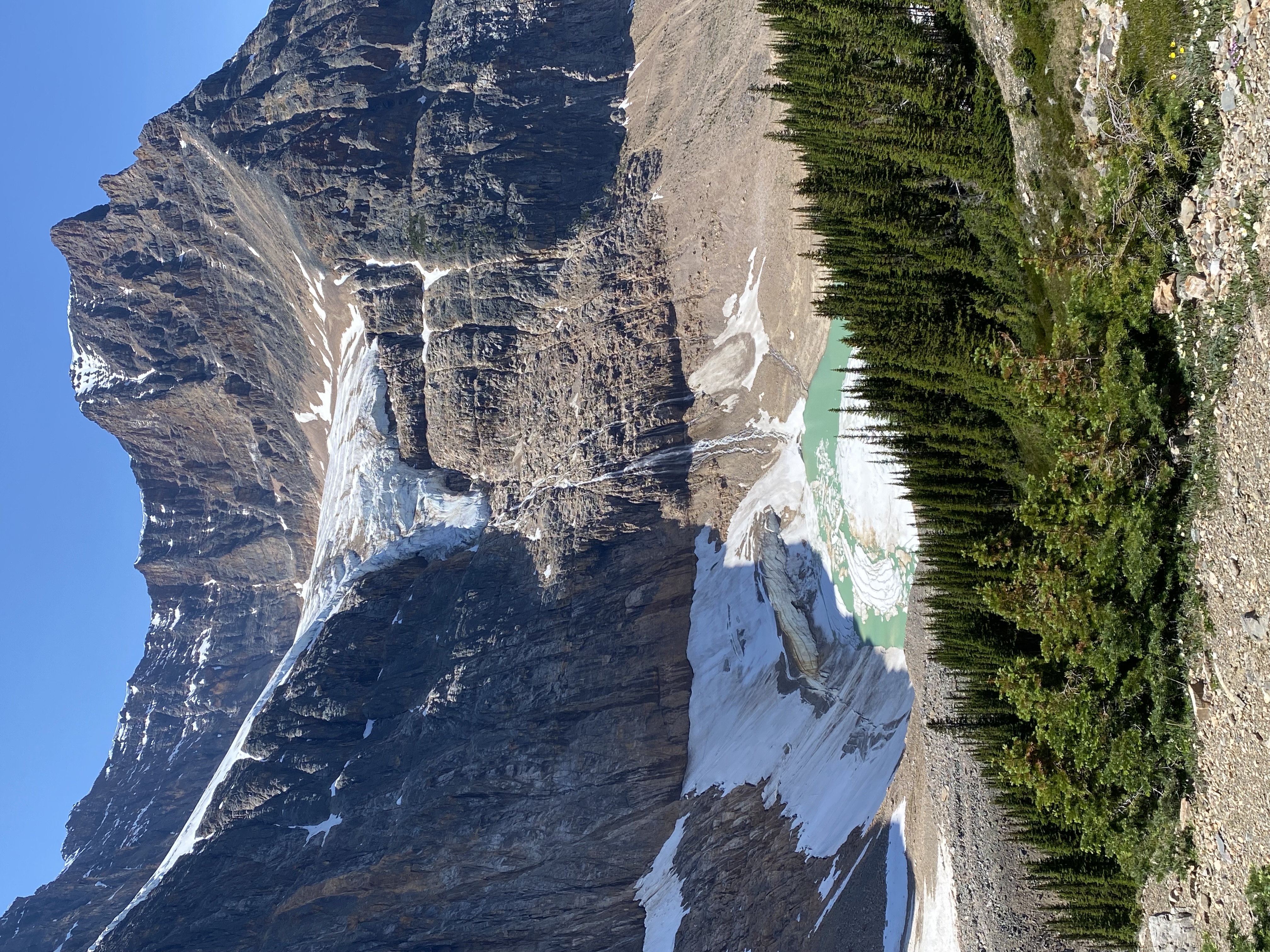
#18. Seth Nisbett
Description: The Lake District is an example of a place where nature has been tamed by humans, whilst preserving its beauty. Dry-stone walls and Herdwick sheep dominate this spectacular, undulating landscape. However, here, near Coniston, we see an eerie reminder of the increasing impact humans are having on the planet, with increasing storm regularity and intensity likely to contribute to the demise of many more trees such as this one. The innocence of the sheep’s gaze contrasts fantastically with the magnificent, twisting branches silhouetted against the gloomy sky.
Location: Coniston, England
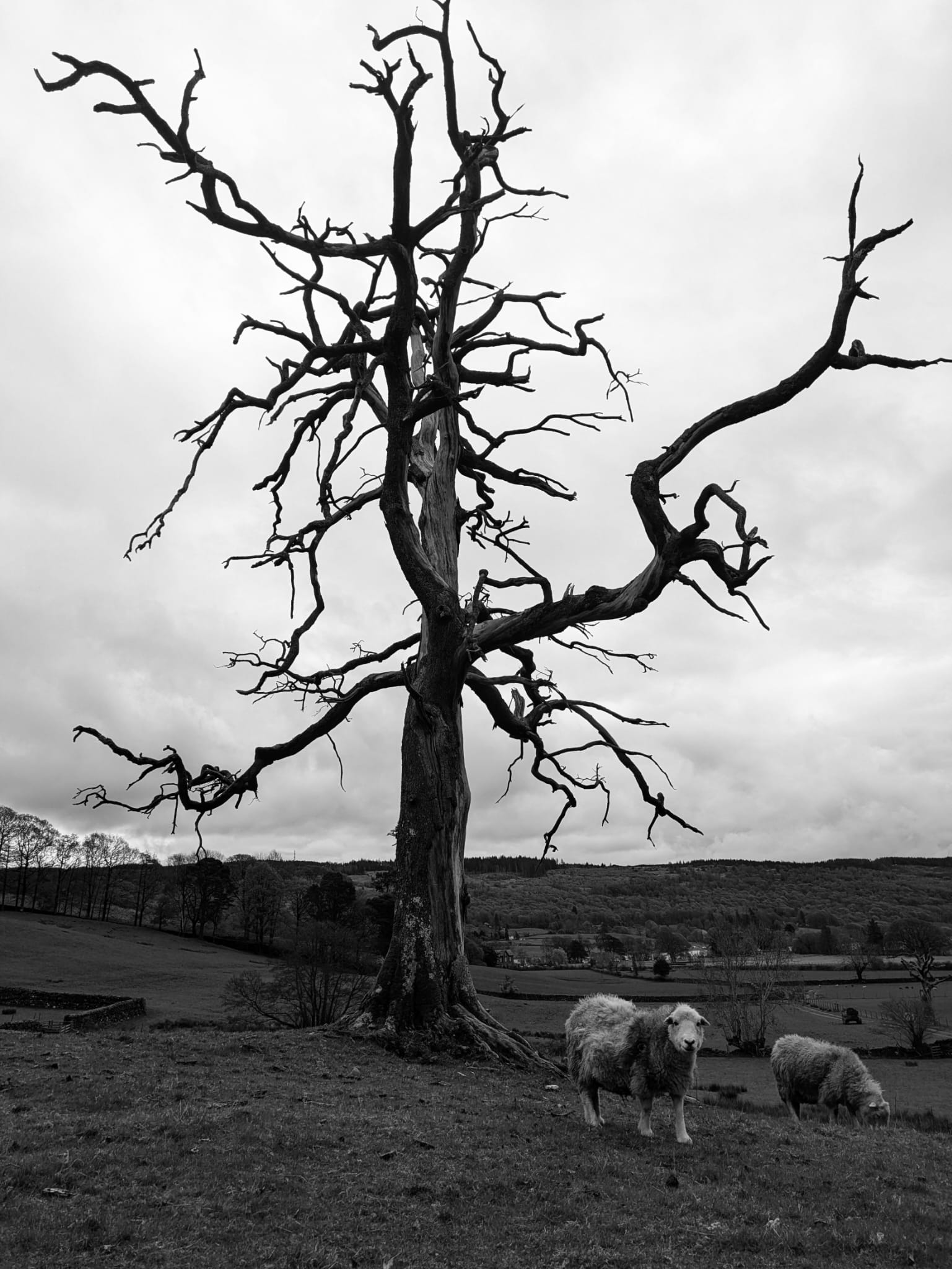
#19. Tomas Bickersteth
Description: This photo was taken in the Arolla Valley, in the Swiss Alps, during the L3 Alpine Landscapes and Processes fieldtrip. It captures a striking contrast between geomorphology, earth surface processes, and human activity. The steep U-shaped valley and braided river reflect the legacy of alpine glaciation, with visible signs of glacial recession and hillslope transport. In the foreground, traditional alpine buildings show how people have historically adapted to this harsh, high-altitude environment. The image offers insights into the impacts of climate change on alpine landscapes and invites reflection on how humans can inhabit even the most extreme environments.
Location: Arolla Valley, Swiss Alps
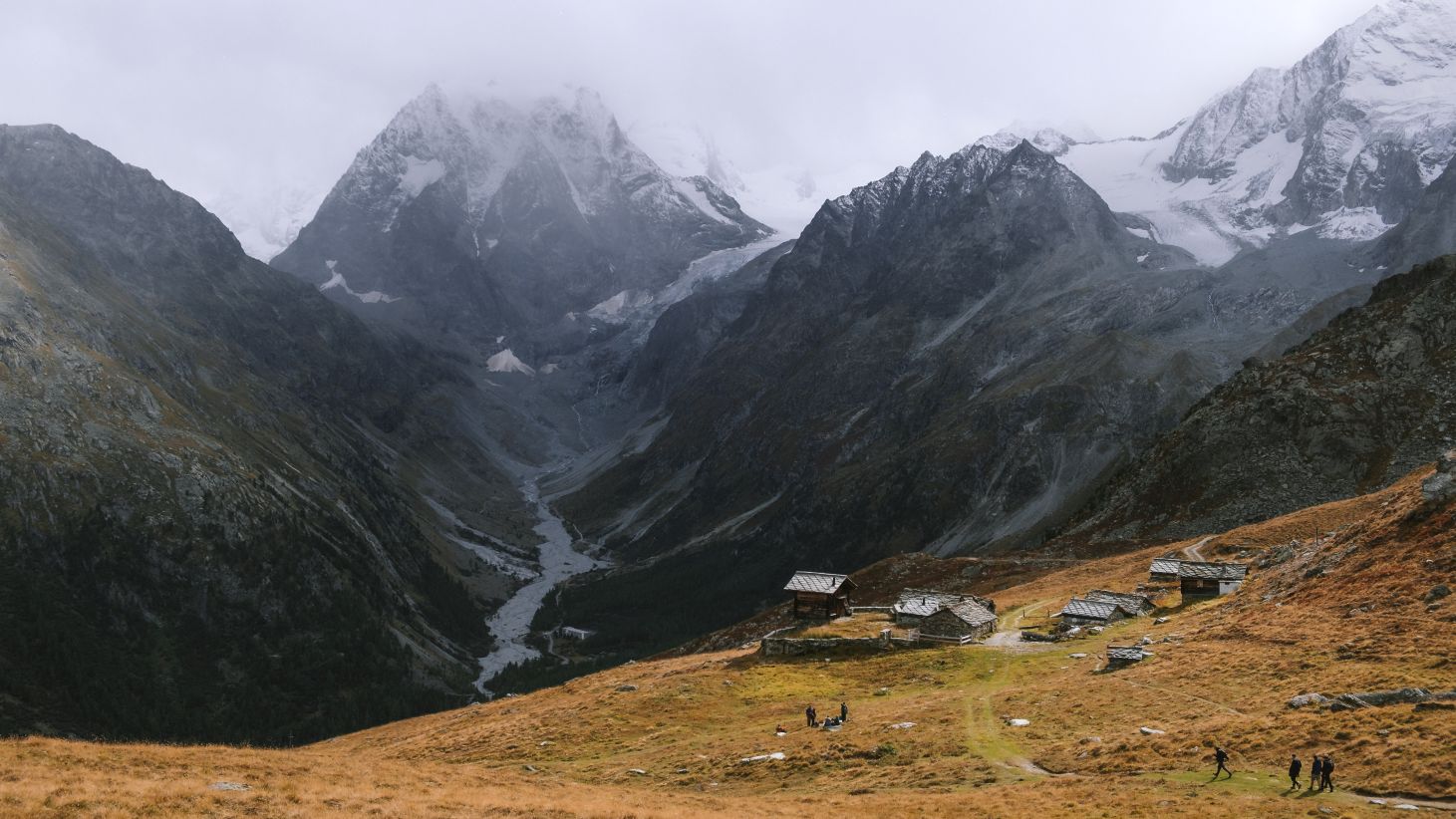
#20. Alfie Twilley
Title: Golden Hour Disruption
Description: In Waibalavu, a village found in the deep interior of Viti Levu, Fiji, the setting golden hour sun breaks through thick mountain cloud, casting bursts of fiery orange across the intensely green landscape. This image captures the tranquillity and stillness of rural life, depicting tin-roofed homes nestled within a dramatic natural setting. Despite the rural setting, subtle signs of modernity, such as power lines, quietly interrupt the scene. In its unity, this image speaks to the coexistence of nature and humans, allowing for the reflection of rural settlement, environmental aesthetics and the development of such harmony in mountain island geographies.”
Location: Fiji
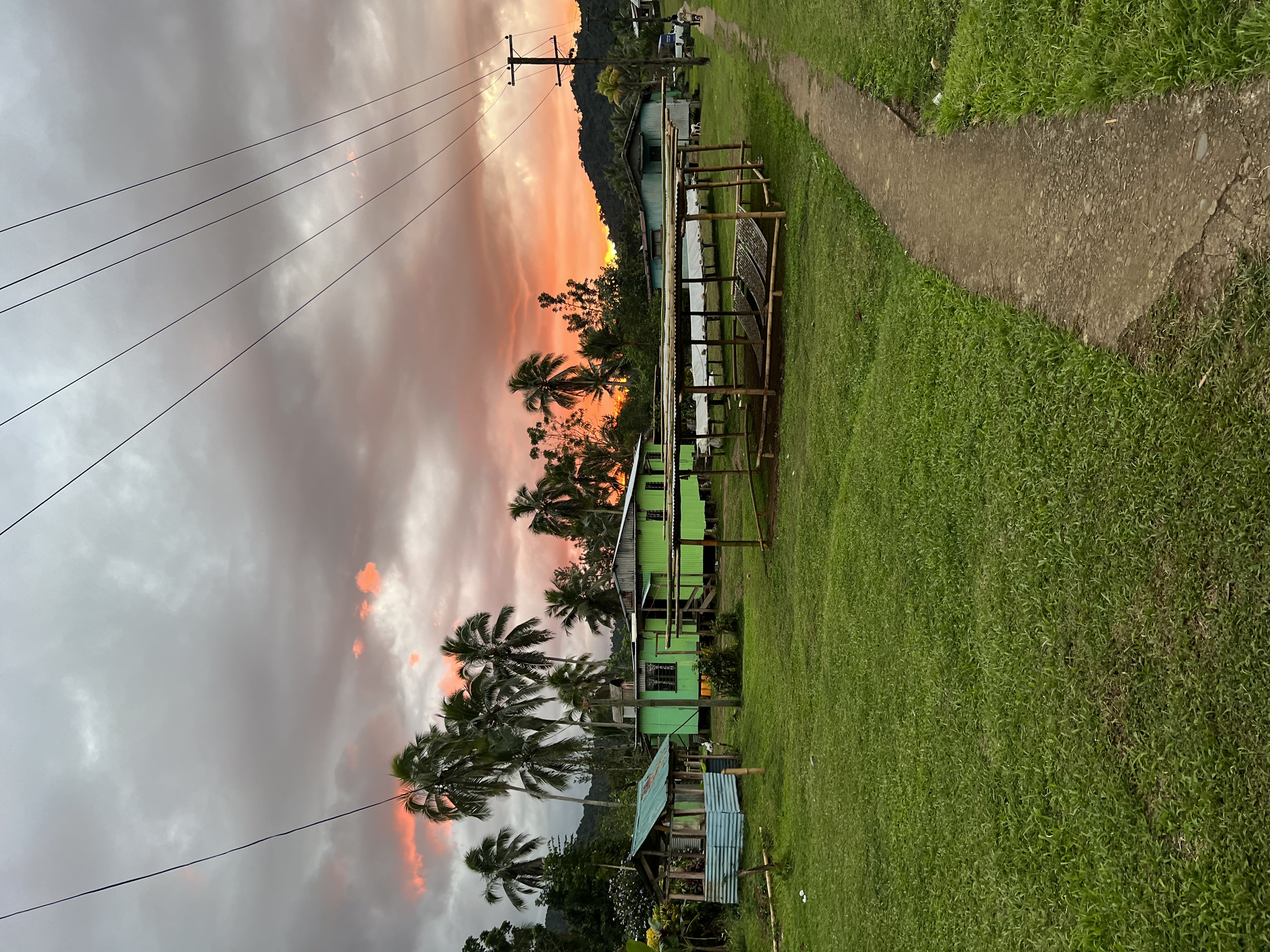
#21. Madalene Howard
Description: Taken outside of Kathmandu’s Durbar square, my image captures the moment people began to re-emerge after sheltering from a monsoon shower - the first time I saw the city in rain just days after arriving. Whilst festivities for the Indra-Jatra festival continued unfazed elsewhere, others took cover beneath architectural fringes. This moment reflects how architecture, cultural rhythms and climate shape urban experiences. Durbar square, (UNESCO World Heritage Site) serves as a holy anchor of the city, yet it is constantly animated by movement, ritual and the fluttering chaos of pigeons, creating a layered, dynamic, yet deeply settled sense of place.
Location: Kathmandu, Nepal
#22. Siyi An
Description: This photo was taken at the end of November, it is Jiuzhaigou Valley in Sichuan, China, famous for its turquoise lakes, snowy forests, and dramatic mountain terrain. Formed by glacial erosion and tectonic activity, its karst landscapes and high-altitude ecosystems reflect complex natural geography. The area lies on the edge of the Tibetan Plateau, is home to Tibetan and Qiang ethnic minorities. Recognized as a UNESCO World Heritage Site and a top-rated AAAAA tourist attraction in China, Jiuzhaigou represents both global natural value and national cultural pride.
Location: Sichuan, China
#23. Sophie Aked
Description: This photo, taken in December 2024 in Hoi An, Vietnam, documents a flood that inundated parts of the historic old town. Reflections of traditional lanterns on floodwaters offer an evocative visual representation of climate-related hazards materialising in built environments and intersecting with urban cultural heritage. It highlights the social and cultural vulnerabilities of heritage-rich cities in the Global South, where climate impacts threaten livelihoods and identity. As sea levels rise, monsoon patterns shift, and extreme rainfall intensifies, deltaic coastal zones like Hoi An face rising risks. Climate change threatens not only natural systems, but also identity, tourism, and tradition.
Location: Hoi An, Vietnam
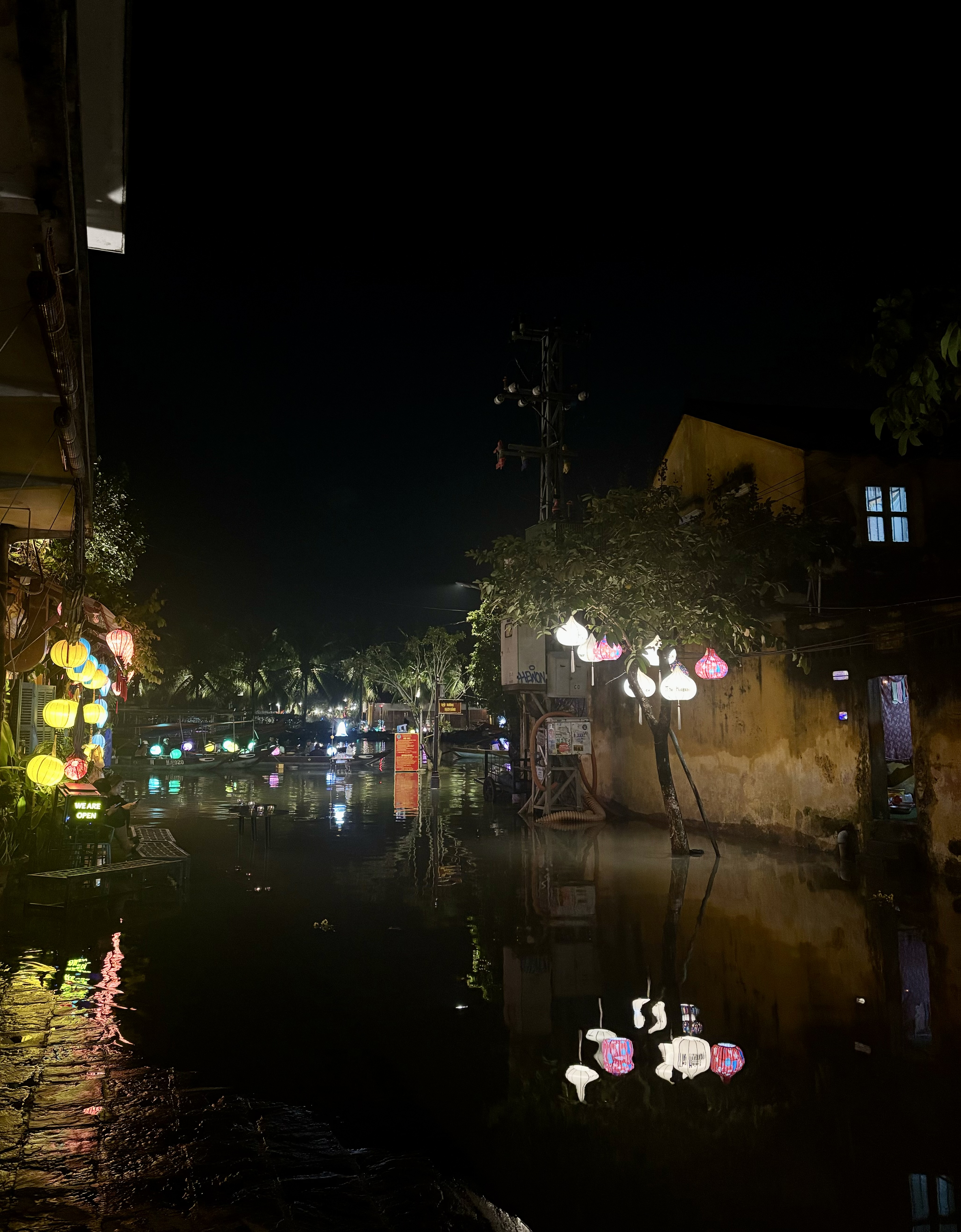
#24. Joy Sum Jasmine Kong
Description: This photo of Hong Kong’s Victoria Harbour captures the striking coexistence of urban density and natural landscapes. From this elevated viewpoint, the towering skyscrapers appear immersed within the surrounding hills, showing how closely civilisation and nature intertwine. In the heart of the city, it’s easy to feel detached from the natural environment, but this perspective reaffirms that we are always within nature, as much as we try to separate ourselves from it. There is always this geographical tension, and harmony, between human development and the natural world, in which the two are inseparable.
Location: Hong Kong
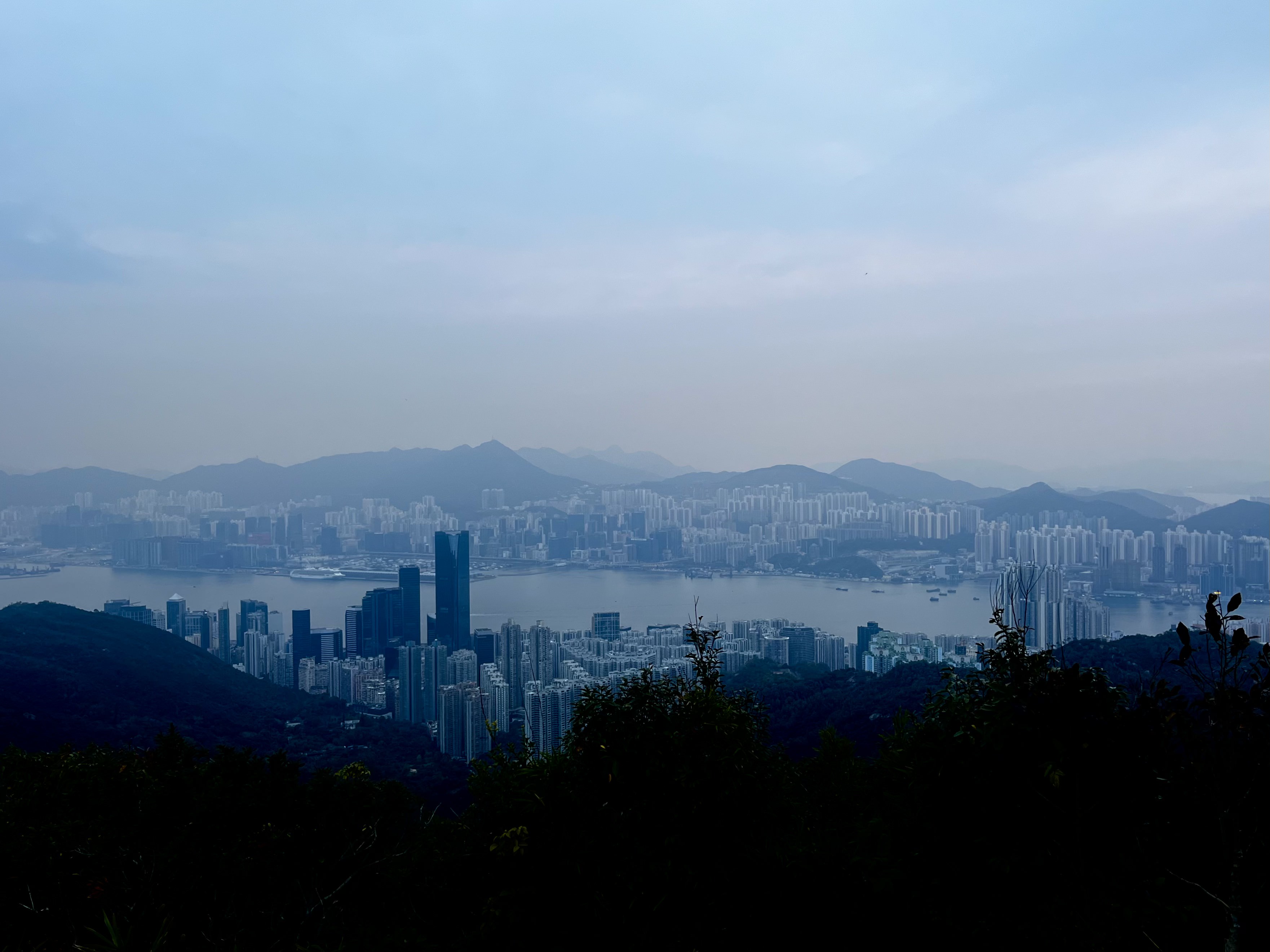
#25. Harry Cordeaux
Description: This image was taken from above Dubrovnik’s Old Town and highlights the relationship between the natural landscape and human settlement on the Adriatic coast. The steep rocky slopes and coastline have shaped how the city developed, while the stone walls reflect a long history of defence and trade, marking a clear boundary between historic and more modern settlements. Today, Dubrovnik faces challenges from tourism and climate change, raising questions about how places balance heritage, economy, and environment.
Location: Dubrovnik
#26. Sophie Rollason, Jess Alexander and Anna Horton
Location: Northumberland National Park
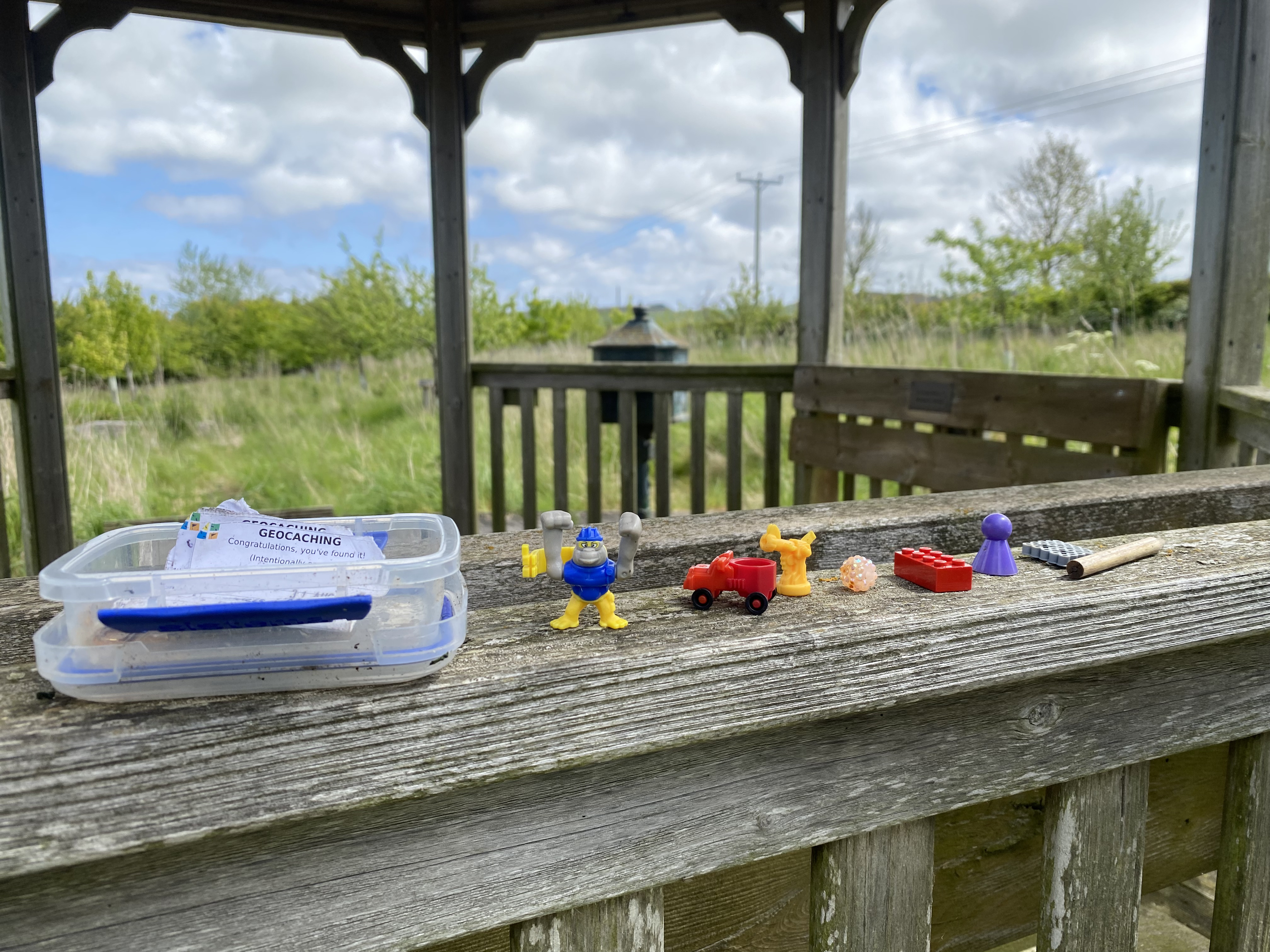
2024 photo competition entries
You can also view all the entries to our 2024 Undergraduate Photography competition here. The winner of the 2024 competition was Zoe Upcraft who won with her photo capturing the ascent of hot air balloons over Cappadocia, Turkey.
BSc (Physical) Geography
The BSc in Geography explores the challenges facing the world today, from climate change to environmental risk mitigation. This flexible course will enhance your understanding of the planet, while furnishing you with the knowledge and skills for a broad range of career options.
BA (Human) Geography
The BA in Geography explores the relationship between people and the planet. This flexible course will enhance your understanding of the challenges facing society and the world around you, while you acquire the knowledge and skills for a broad range of career options.
Undergraduate Study
When you study Geography at Durham University, you join one of the world's best geography departments. We offer BA and BSc degrees tailored to your interests and career goals. Our vibrant student community is right there with you.
Contact Us
Founded in 1928, the Department of Geography at Durham University is one of the leading centres of geographical research and education in the world.
Department of Geography
Durham University
Lower Mountjoy
South Road, Durham
DH1 3LE, UK
Tel: +44 (0)191 3341800


/prod01/prodbucket01/media/durham-university/departments-/geography/Matt_Couchmann-3872X1296.JPG)
